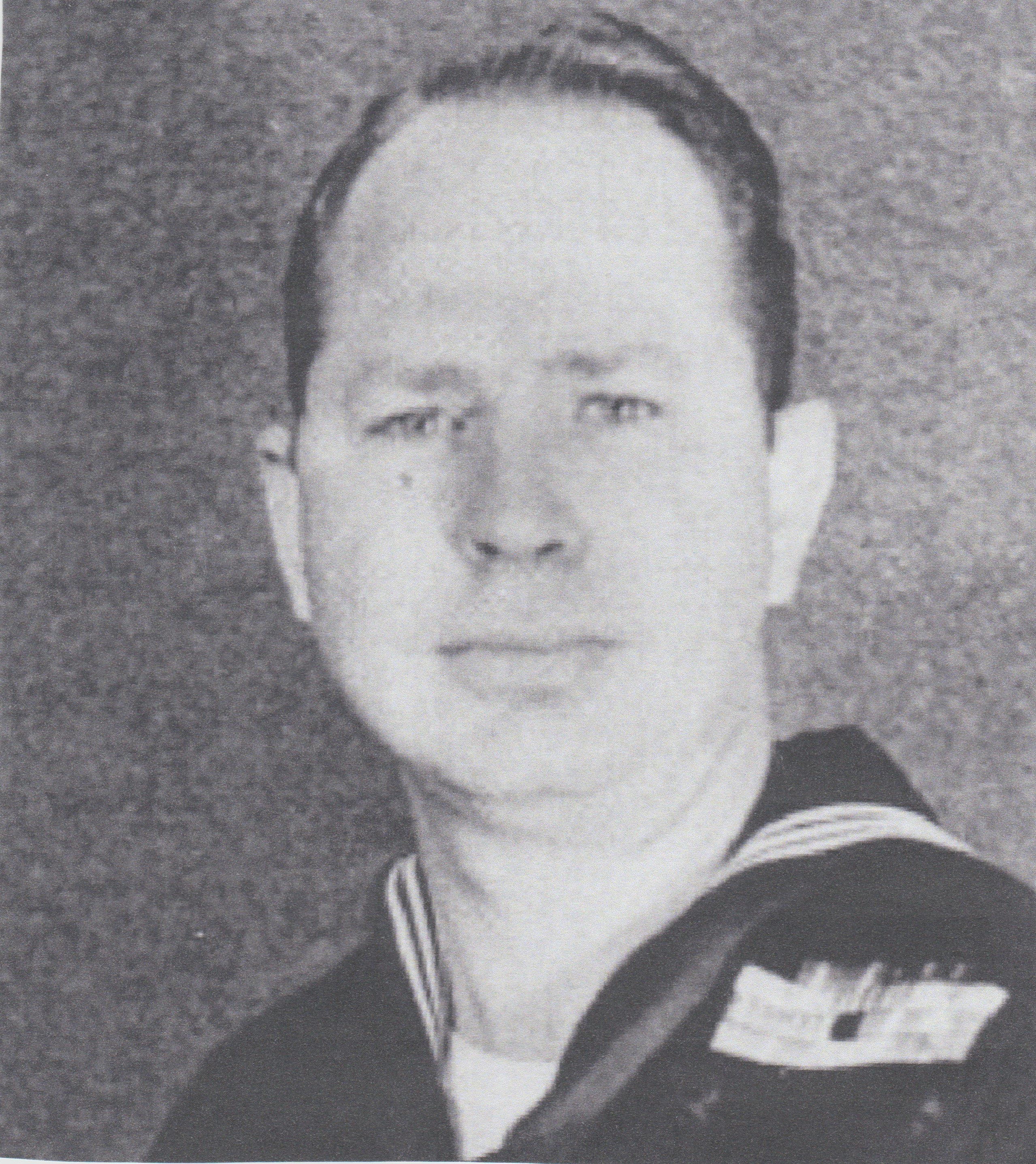ANDERSON-JAMES
JAMES FREDERICK ANDERSON

PHM1

ATTENDED THE PEARL HARBOR WOUNDED
Pharmacist Mate James Frederick Anderson, assigned to the hospital ship USS SOLACE, was preparing to go ashore at Pearl Harbor on December 7, 1941, when the Japanese attack began. The following are excerpts from an interview of Anderson concerning the attack.
“That morning we were off the end of Ford Island with a clear view of Battleship Row. We were tied up between a repair ship and several destroyers. It had been my intention to go to church that morning and I was standing in line waiting for eight o’clock when our liberty boats would come. We were standing at a large cargo hatch looking out across the bay and could clearly see the battleship UTAH. About this time some planes came down through the mist of the early morning. I said to a friend beside me, ‘Well, it looks like we’re going to have another one of those damn sham battles this morning.’ But as the planes came in they dropped torpedoes and I said, ‘That’s too much. They don’t drop torpedoes.’ As the planes flew up over the top of our ship I could see the red balls on the wings. As the torpedoes hit the UTAH, the ship appeared to jump – ten, maybe twenty feet in the air. I said, ‘Let’s get this damn hatch shut.’ Three of us that were standing at the big iron cargo hatch reached out and pulled it shut. Normally it took an electric winch to pull it shut. How three of us did it I’ll never know.”
“All the men from my ward, following what we had learned from our drills in the past, began to put metal covers over the windows. (SOLACE had been a passenger ship with windows up high.) While we were doing this, I kept turning around to see what was going on and I saw more planes coming in, passing over Battleship Row dropping bombs. I remember very clearly what looked like a dive-bomber coming in over the ARIZONA and dropping a bomb. Almost instantly it exploded, blowing the whole bow loose. It rose out of the water and settled. I could see flames, fire and smoke coming out of that ship, and I saw two men flying through the air and the fire, screaming as they went. Where they ended up I’ll never know.”
“Then we went into the ward and checked everything and made ready for patients to arrive. All this happened in maybe ten minutes. Almost immediately we started getting casualties, and from that point on I was very busy in our surgical ward. I remember only one of the men we got was able to tell us his name. The others were all in such critical condition they couldn’t talk at all. They were all very badly burned from the oil and flash burns. The one who gave us his name did not have a single stitch of clothing on. The only thing left was web belt. He survived but he had a very long cut down the top of his head and every time he breathed his scalp would open up and I could see his skull.”
“Many of the men who came in had their ears burned completely off, their noses badly burned, and their fingers bent like candles from the intense heat they had been in. Their bodies were just like hot dogs that had fallen in the fire and burned. All we could do for those poor fellows was give them morphine and pour tannic acid over them. I think we must have gone through forty-eight hours without any sleep –all spent tending to our patients. But after forty-eight hours I got to the point where I was staggering around. One of the bunks became empty. A nurse came along and said, ‘You get on that bunk and grab some sleep.’ I don’t know how long I slept, but after a while somebody woke me up because another patient had to go in the bunk. I got up and went back to work again. Nobody ever thought of asking for relief.”
“In the days after that attack, boats from our hospital ship had the awful job of going out alongside the battleships and picking up the remains of the bodies that had floated to the surface. Our corpsmen tried very hard to salvage any part of a human body that could be identified. We brought these parts back and tried to identify fingerprints or teeth or anything of this kind. It was a gruesome job but we had to do it as the detail was assigned to us. The body parts were brought to the morgue, where we would clean them of oil and try to identify them.”
James Frederick Anderson remained on active duty until retiring in 1960 from his last duty assignment, the USS THETIS BAY. He died on August 28, 1982, and is buried at Golden Gate National Cemetery in San Bruno, California.
Submitted by CDR Roy A. Mosteller, USNR (Ret)

